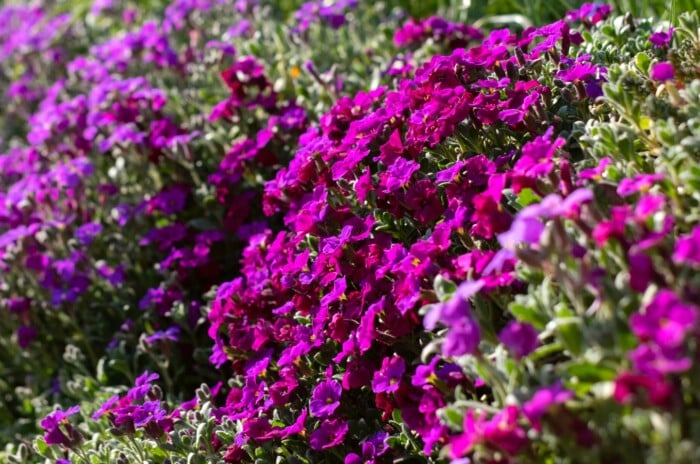How to Plant, Grow, and Care for ‘Silver Falls’ Dichondra
Do you love growing in containers and looking for a trailing ornamental to spill over the edges and complement your bold annual flowers? Or perhaps you’re looking for a vigorous ground cover for a low-maintenance way to cover sloped land or a retaining wall. Well then, stay put! In this article, organic farmer Jenna Rich shares all about how to care for ‘Silver Falls’ dichondra.
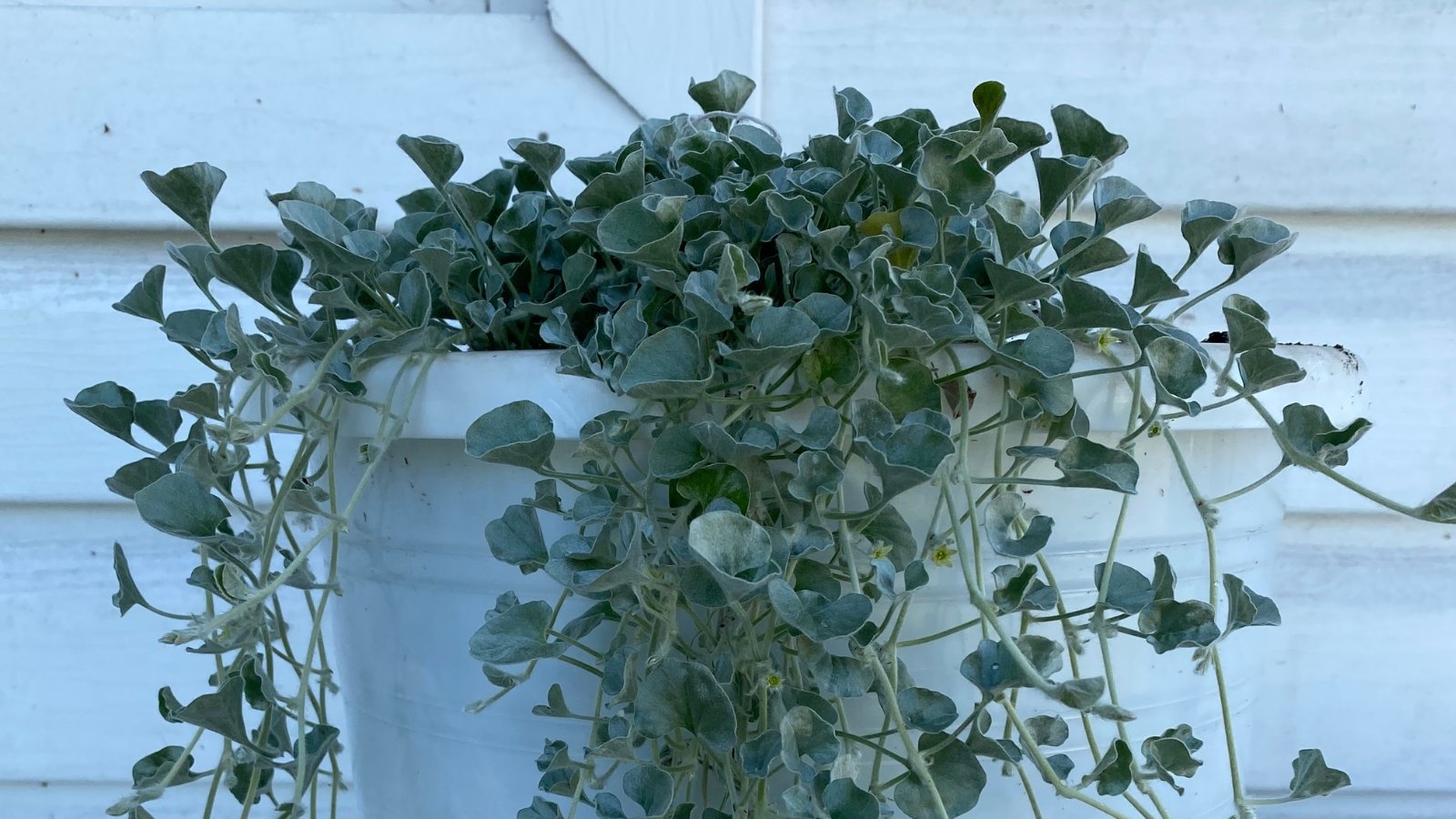
Contents
‘Silver Falls’ dichondra is one of the most laid-back annual ground covers, making me wonder why everyone doesn’t add it to their garden. Its vines remain tidy, even when they reach six feet long, no matter where they’re growing.
I was surprised to learn a fellow New Hampshire grower successfully overwintered ‘Silver Falls,’ as its native to desert regions. I’ve now added this to my list of plants to attempt overwintering in zone 5b.
Let’s get into how to plant, grow, and care for ‘Silver Falls’ dichondra.
Overview
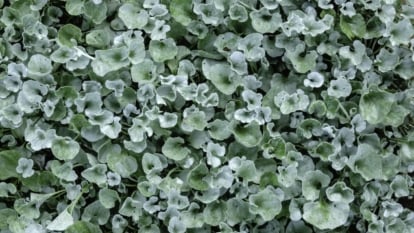
|
Botanical Name
Dichondra argentea
Plant Type
Vigorous trailing, herbaceous, evergreen groundcover
Family
Convolvulaceae
Genus
Dichondra
Special Characteristics
Heat and drought-tolerant
|
Native Area
Texas and Mexico
Exposure
Full sun to partial shade
Height
2 to 3 inches, vines 2 to 6 feet long
Watering
Requirements Low to moderate
Soil Type
Well-draining, moist sandy loam
|
Pests
Flea beetles, cutworms
Diseases
Alternaria leaf spot, root rot, rust
Maintenance
Low
Hardiness Zones
Perennial in 8 to 12 or ornamental annual
Bloom Time
May to June
|
What is ‘Silver Falls’ Dichondra?
‘Silver Falls’ is a popular cultivar of Dichondra argentea, native to Texas and Mexico. Commonly called silver nickel vine, kidney weed, and silver ponysfoot, this creeping vine grows in well-draining and moist sandy loam. It performs best in full sun and is known for its ability to trail up to six feet along rock walls, spilling over baskets, and cascading along garden floors.
This plant is a Proven Winners® awardee based on performance in trials, resistance to disease and pests, and overall toughness. Its growth is quick and vigorous, but it is not considered invasive.
Native Area
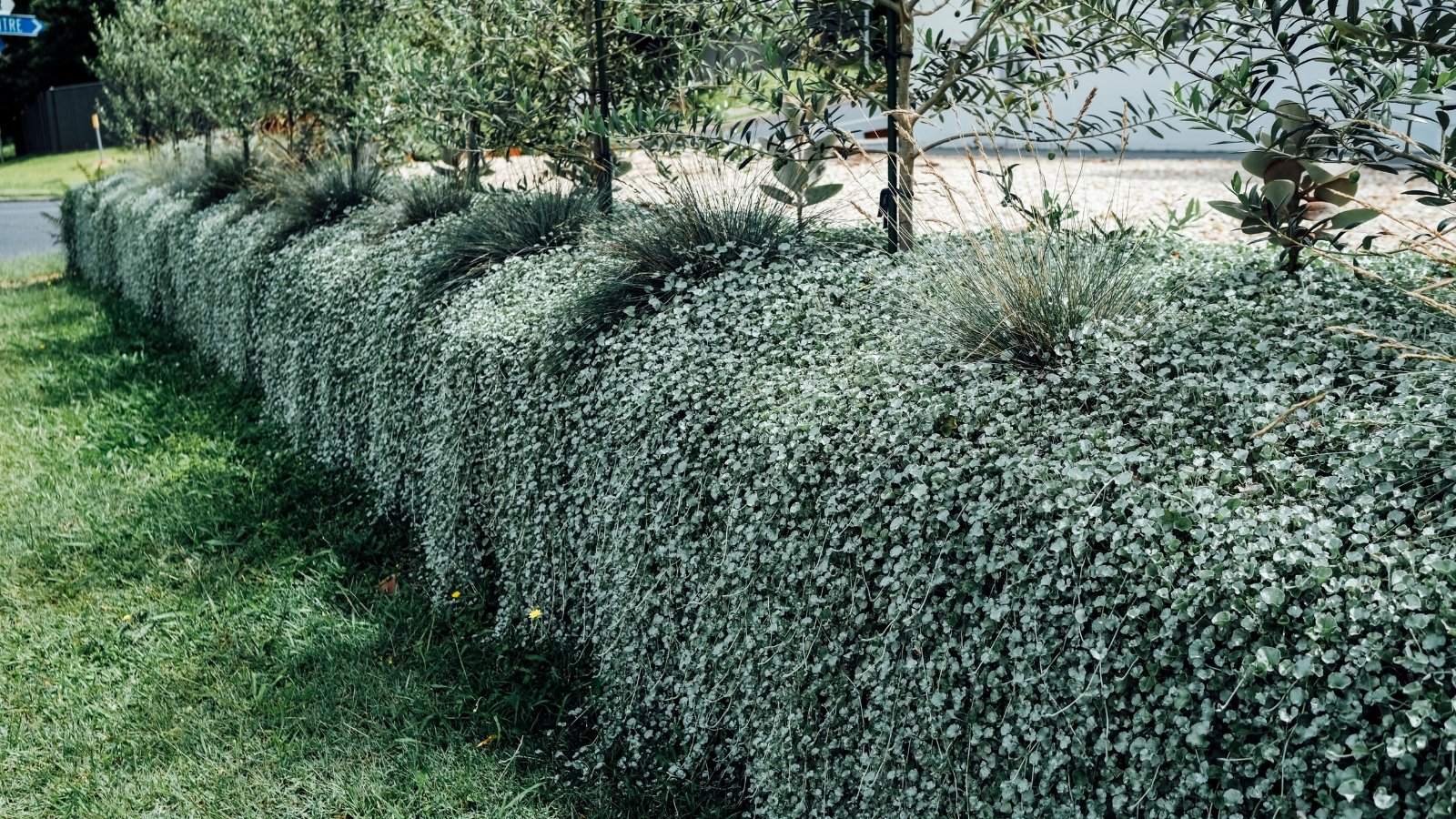
‘Silver Falls’ is native to western Texas, New Mexico, and northern Mexico, thriving in the area’s dry desert heat.
Characteristics
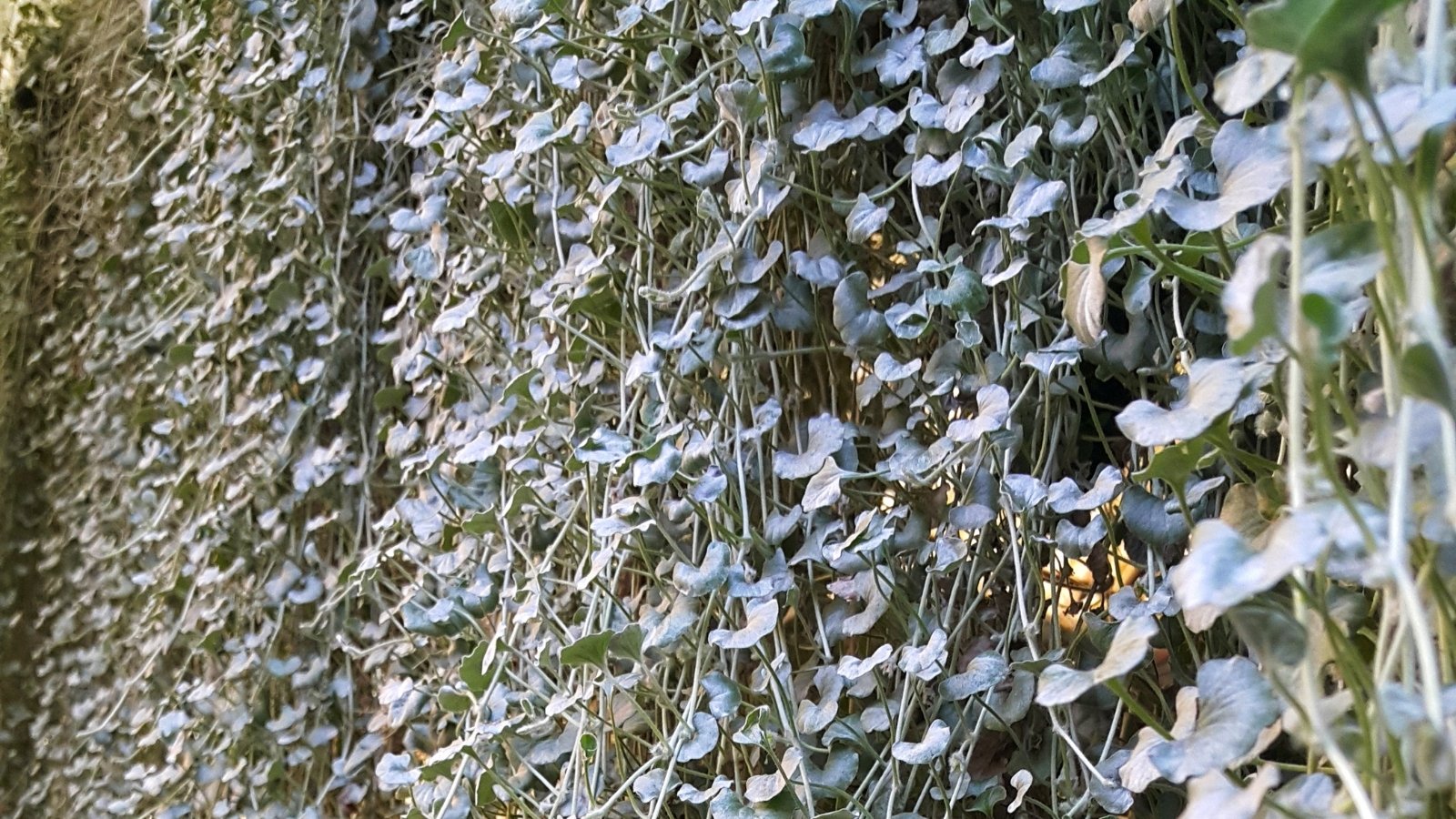
The long, trailing stems are grayish-silver. Its tiny, inconspicuous white and greenish-yellow flowers bloom from May to June. Leaves are simple but are the real stars of the show. Their shape is ovate, and the surface is a silvery light green pewter. They grow densely, creating a mat-like carpet, choking out any hopeful weeds.
The low growth habit makes this dichondra perfect for covering retaining walls, rock gardens, pathways, and sloped land at risk for erosion.
Planting
Some gardeners choose to buy plants or seeds each year as they are easy to get established and quick-growing. However, stay tuned for information on how to save seeds, take cuttings, and divide your plants to increase your plot easily (and practically for free).
Growing From Seed

Start seeds indoors 12 weeks before your area’s last expected frost date. Sow seeds in a strip tray and barely cover with growing medium or vermiculite. Bottom water to prevent the seeds from being displaced and keep temperatures around 75°F until germination, using a germination heat mat if desired.
Germination should occur in 7-14 days. Harden off seedlings once they reach two to three inches before being transplanted outdoors.
Transplanting

Dig a hole in your prepared garden bed that will fit the entire root ball, and drop your plant in the hole so the top of the root ball is level with the soil surface. Surround the plant with native soil and tamp it firmly to provide good root-to-soil contact. Water the plant until the soil is moist but not soggy.
How to Grow
‘Silver Falls’ dichondra requires little attention to thrive and is rarely bothered by pests and diseases.
Light
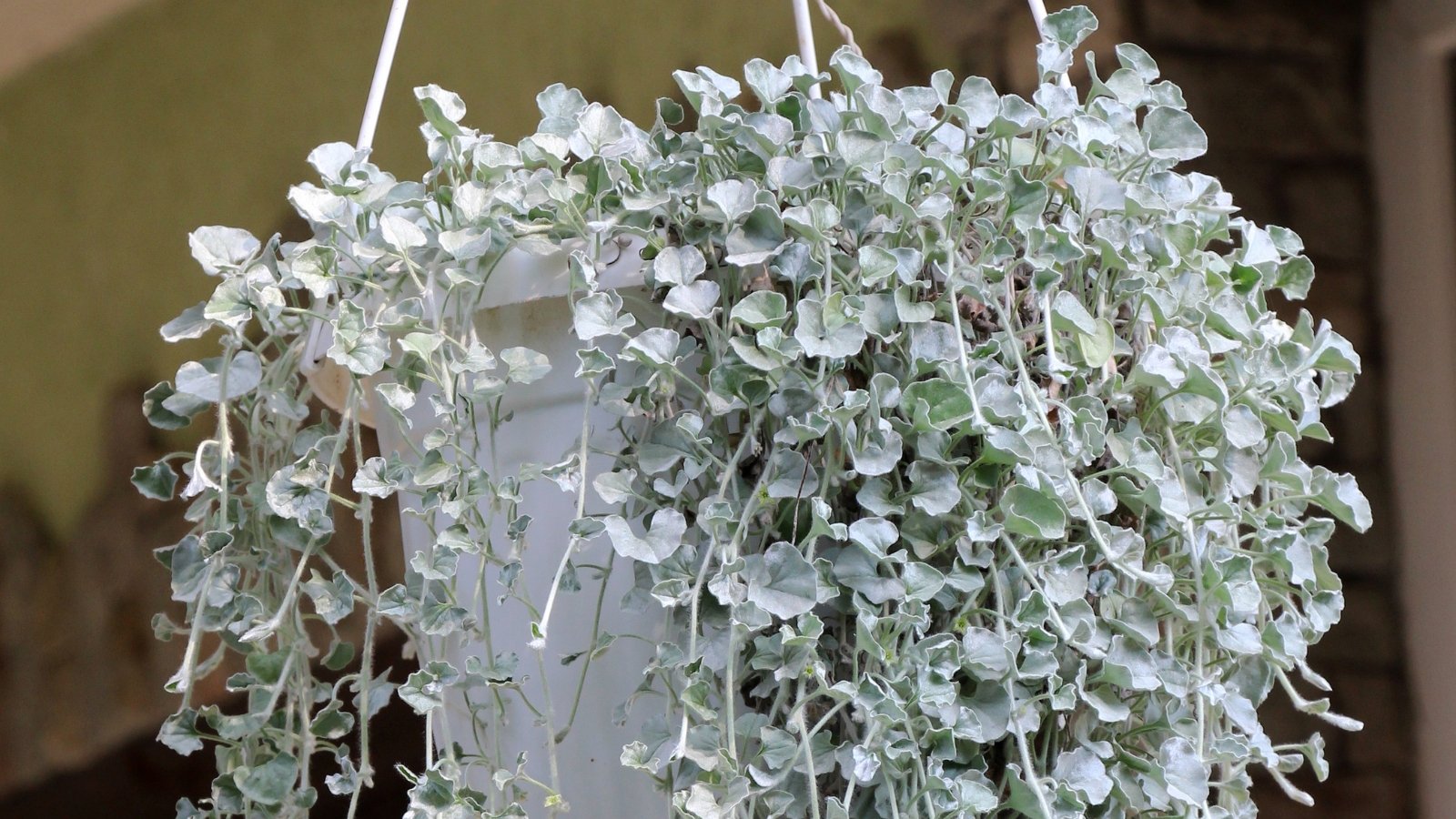
It prefers full sun but will tolerate dappled afternoon sunlight and shade from canopies. When plants are young, extreme winds and prolonged periods of hot direct sunlight could be a risk. Use a layer of row cover and shade cloth to protect them as needed.
Water
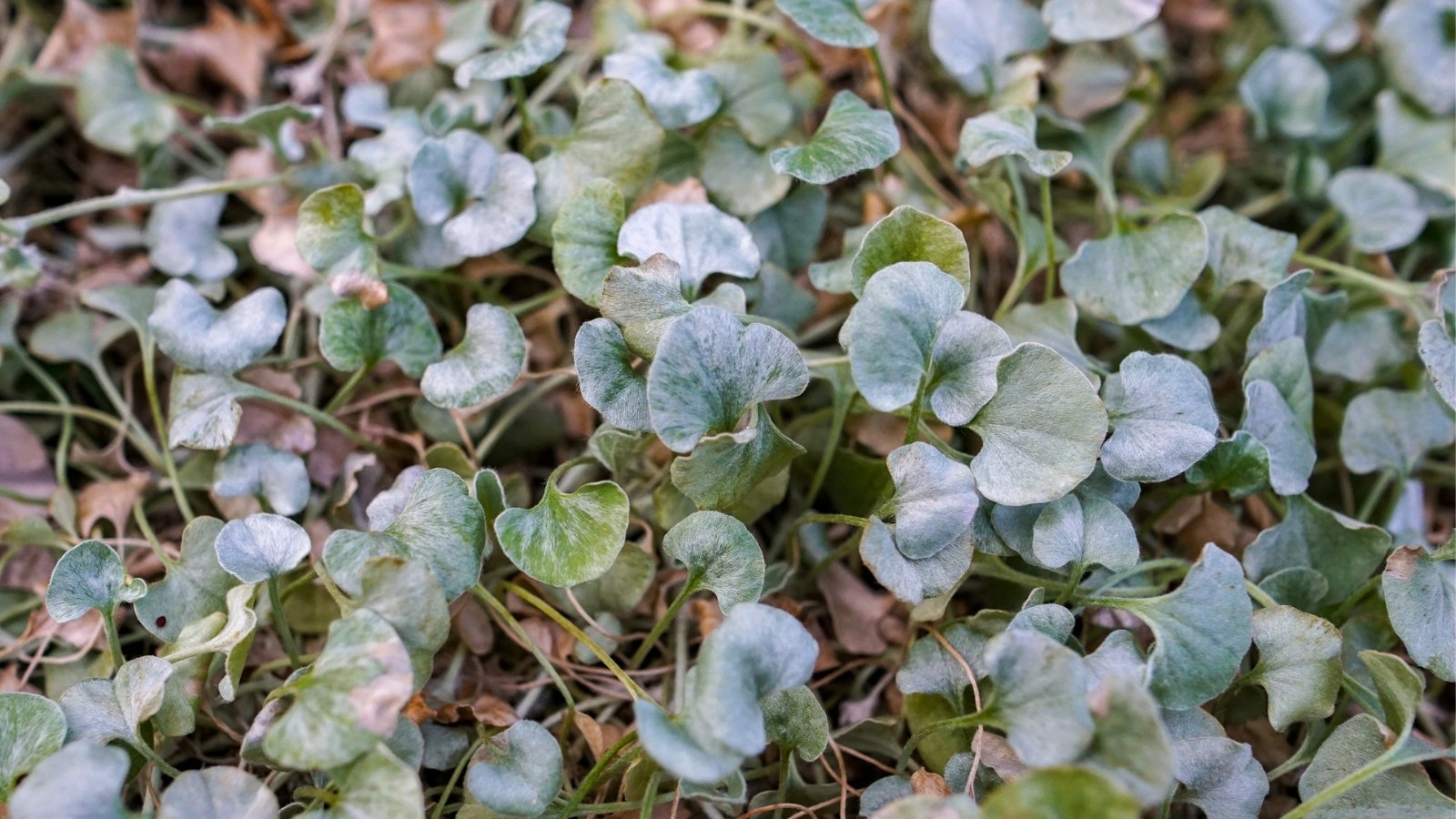
Ensure plants receive at least one inch of rain per week. A deep watering system is recommended during times of no rainfall. If you must overhead water, do so early in the day so water can soak in and leaves are not wet going into the night. Allow the soil to dry almost fully before watering; avoiding overwatering is key to success. Established plants are drought-tolerant.
Soil

Well-draining but moist soil is crucial to success. Its pH preference is mildly acidic to mildly alkaline. Add compost at the beginning of the season and add amendments as needed after reviewing soil test results. Plants can tolerate salts, making it an easy choice if you live on the coast.
Temperature and Humidity
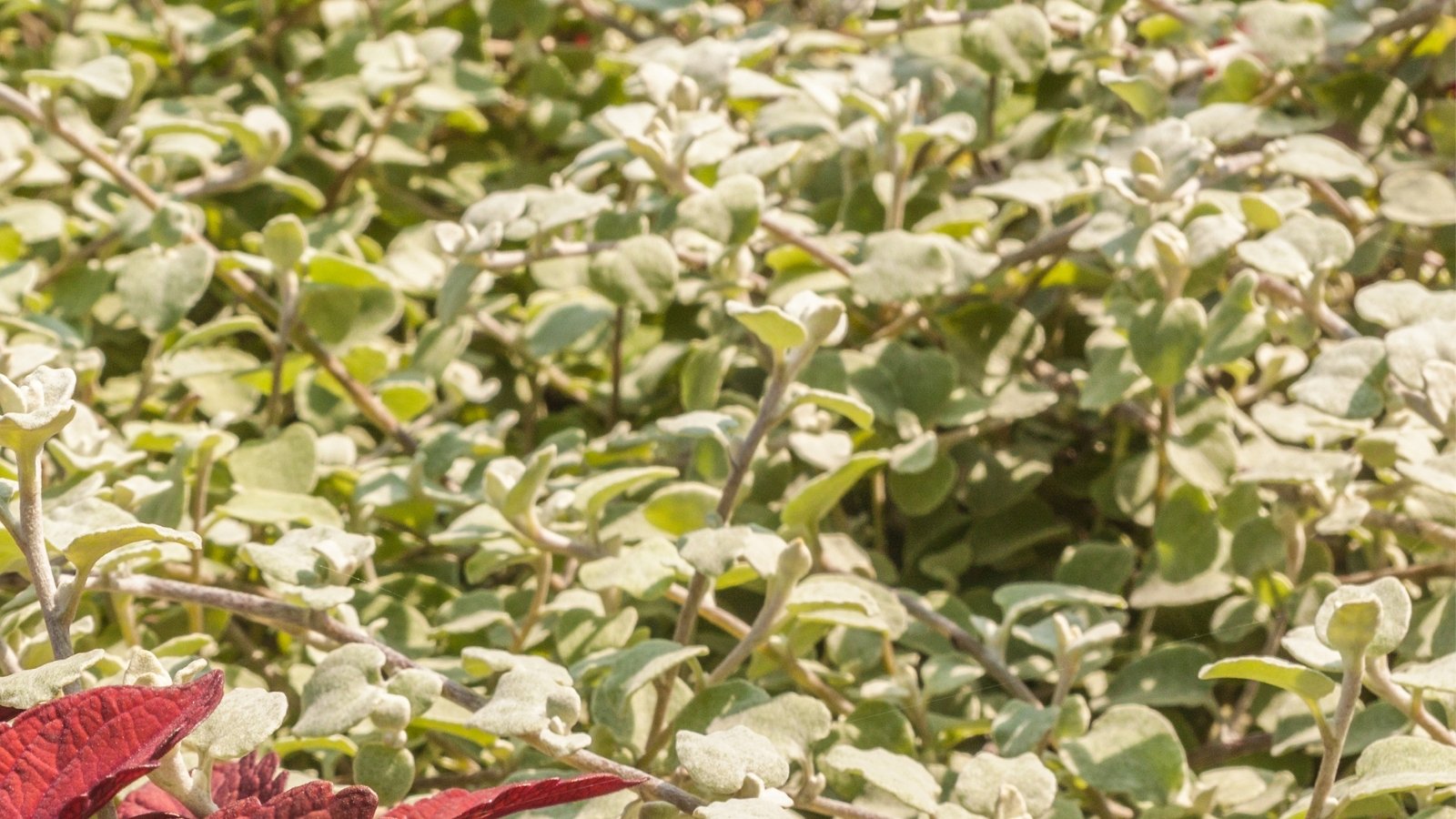
‘Silver Falls’ dichondra can tolerate humid conditions and high temperatures. Preferred temperatures are between 60-85°F. Anything below 60°F causes growth to slow or cease. During times of high humidity, it’s even more important to limit watering. Fungal diseases like Alternaria leaf spot thrive in extended hot and humid weather conditions.
Fertilizer

Lightly feed with a slow-release fertilizer when you see new growth appear after transplanting. Too much fertilizer can burn the foliage or cause rot.
Maintenance
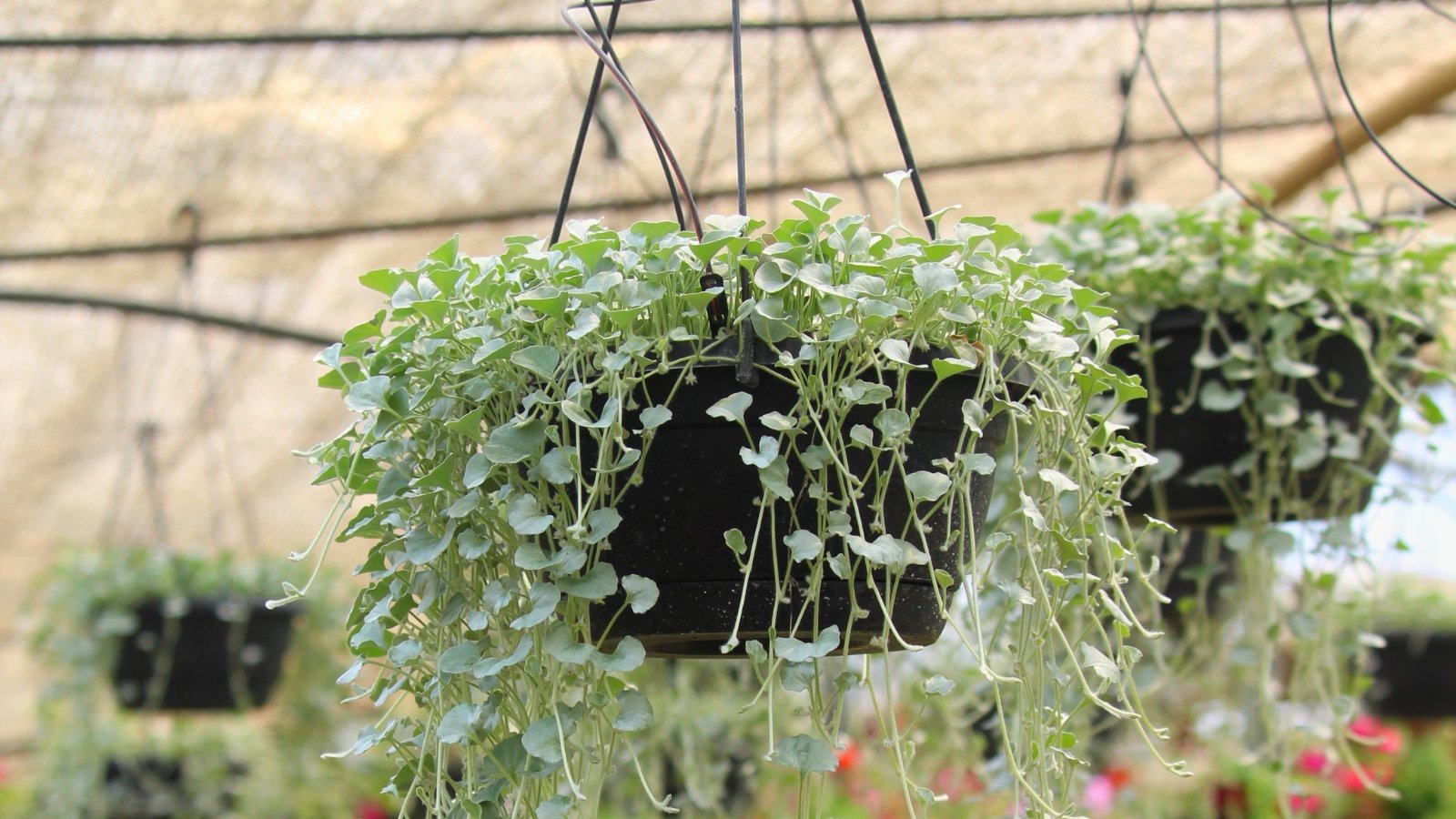
‘Silver Falls’ dichondra is virtually maintenance-free once established. With a little TLC as young transplants, they’ll grow into healthy plants, spread quickly, and may return the following year in certain climates.
Mulch

Mulch lightly around the base while the plant is rooting in a new home to help the soil retain moisture and keep weed pressure down. Once the plant is established, the carpet-like ground cover will suppress weeds on its own. Heavy mulch or smothering the stems could lead to rot, so apply lightly.
Mulched leaves or organic straw are good options that will add fertility to the soil as they break down.
Pruning
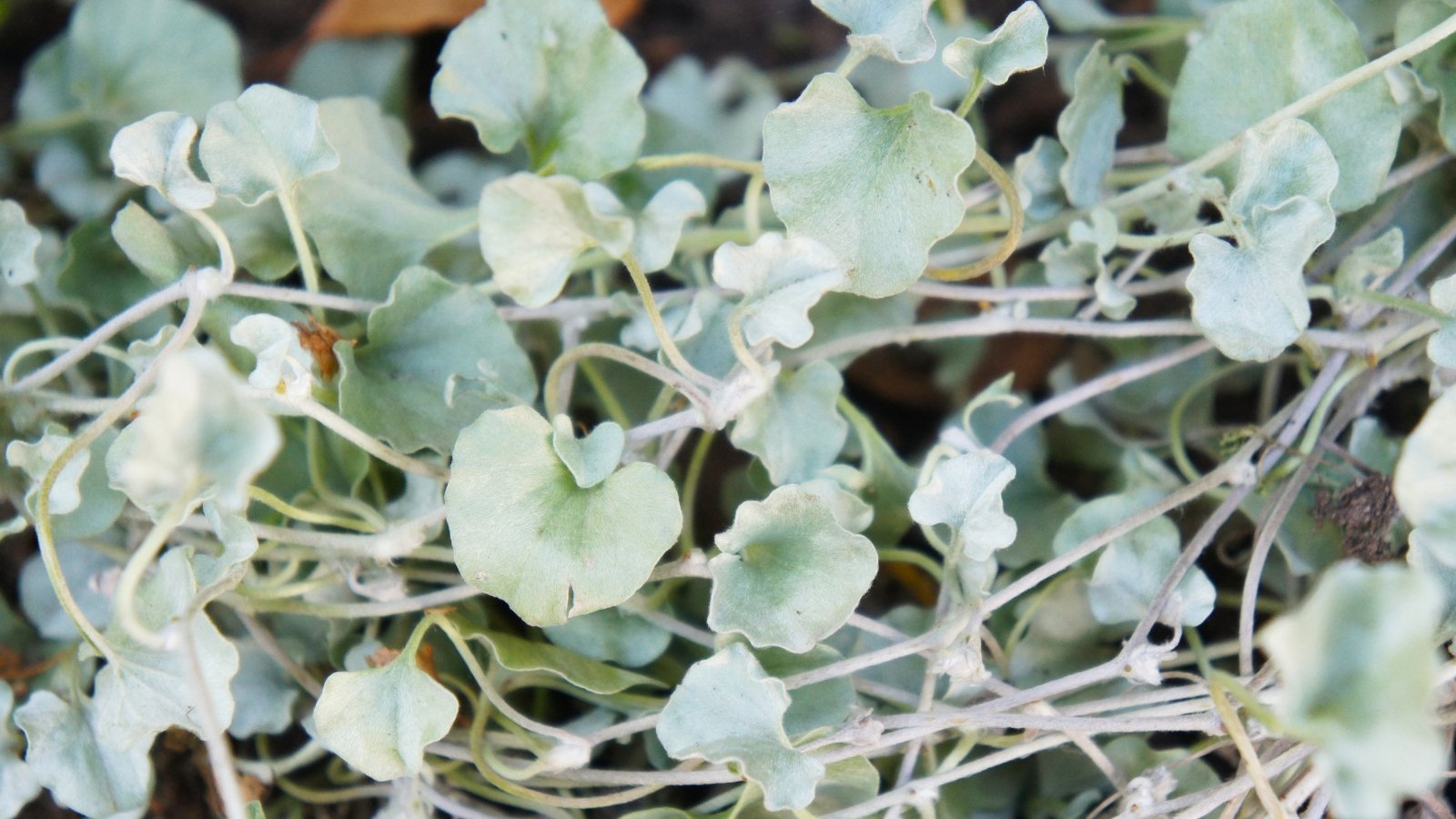
No pinching is necessary for this plant to grow long vines. You may prune once growth takes off in the spring to shape your plant, and always remove yellowing leaves. Prune above nodes to encourage more growth at the base, creating a bushier, fuller plant. Cut stems at a 45° angle for easy healing.
Blooming
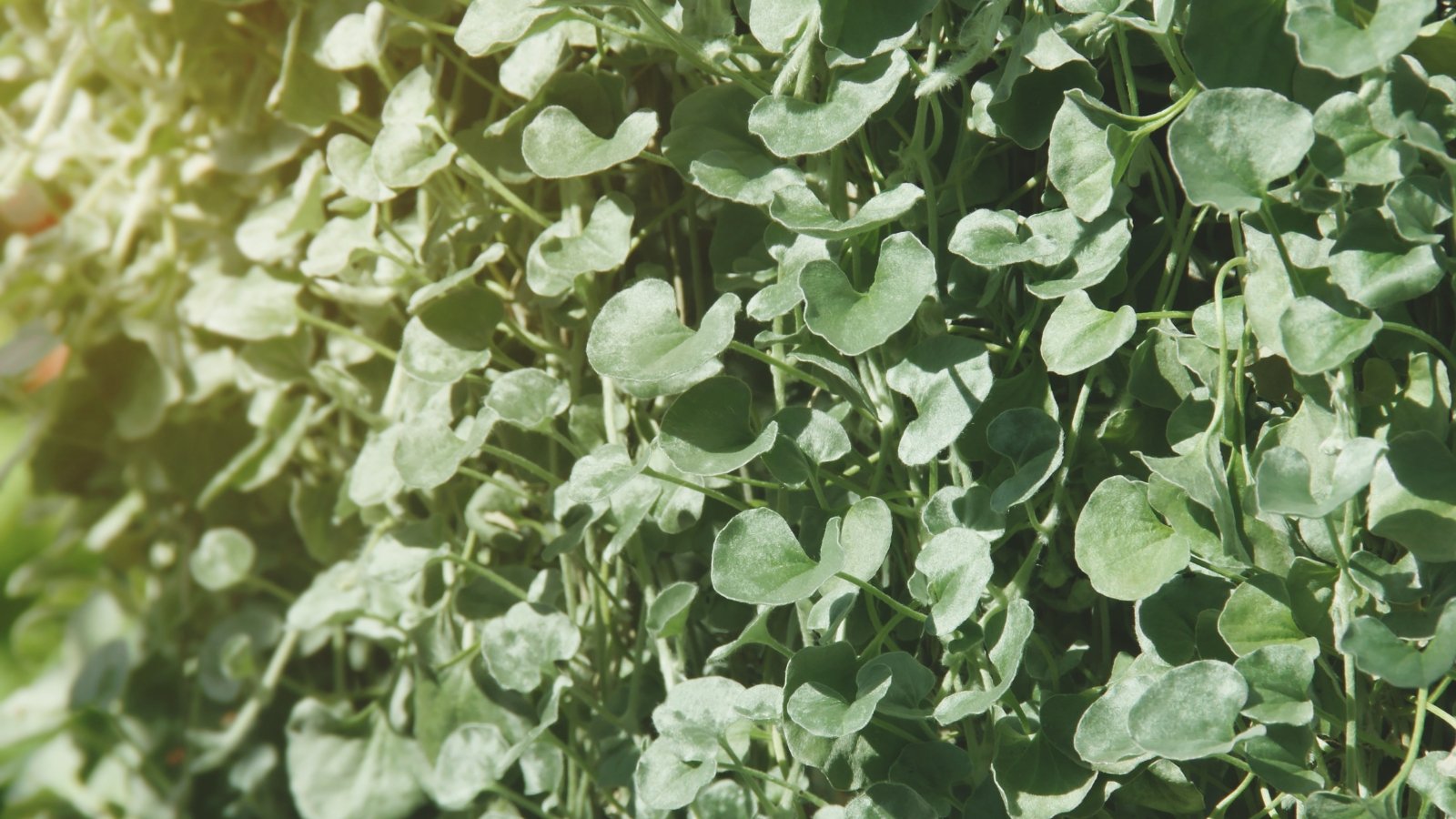
Small flowers will bloom from May to June but they’re fairly insignificant. Some growers don’t even notice them!
Propagation
Creating new plants is easy and can be done by taking cuttings, layering, or dividing them up.
Cuttings
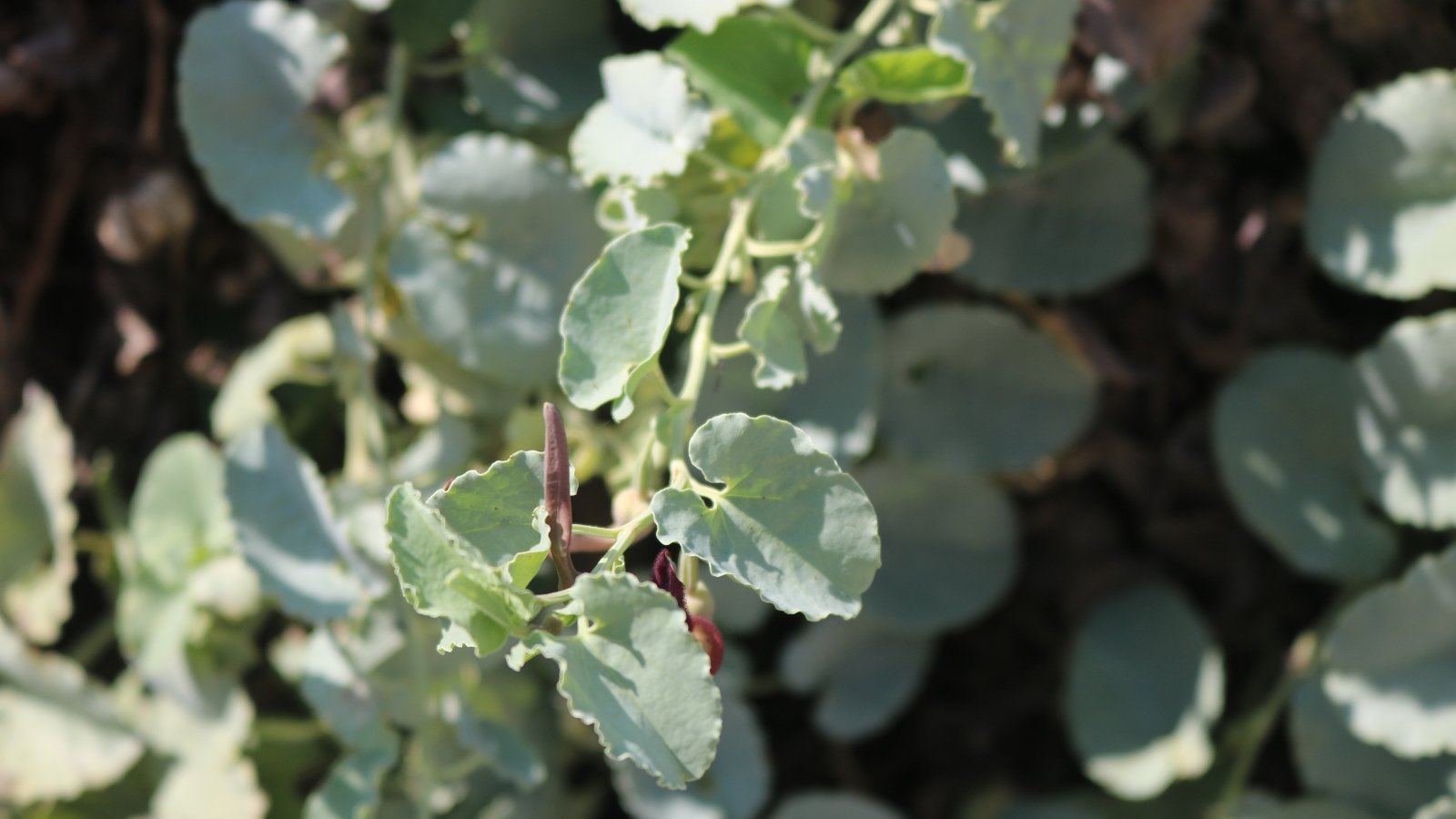
It’s easy to take cuttings and create new ‘Silver Falls’ plants thanks to its trailing growth habit. It will root wherever it touches soil, so dig around at the soil surface and separate a few stems with the roots attached. Pot them up in fresh, moist soil and wait for a few weeks until new growth appears before transplanting them or gifting them to a friend.
Layering
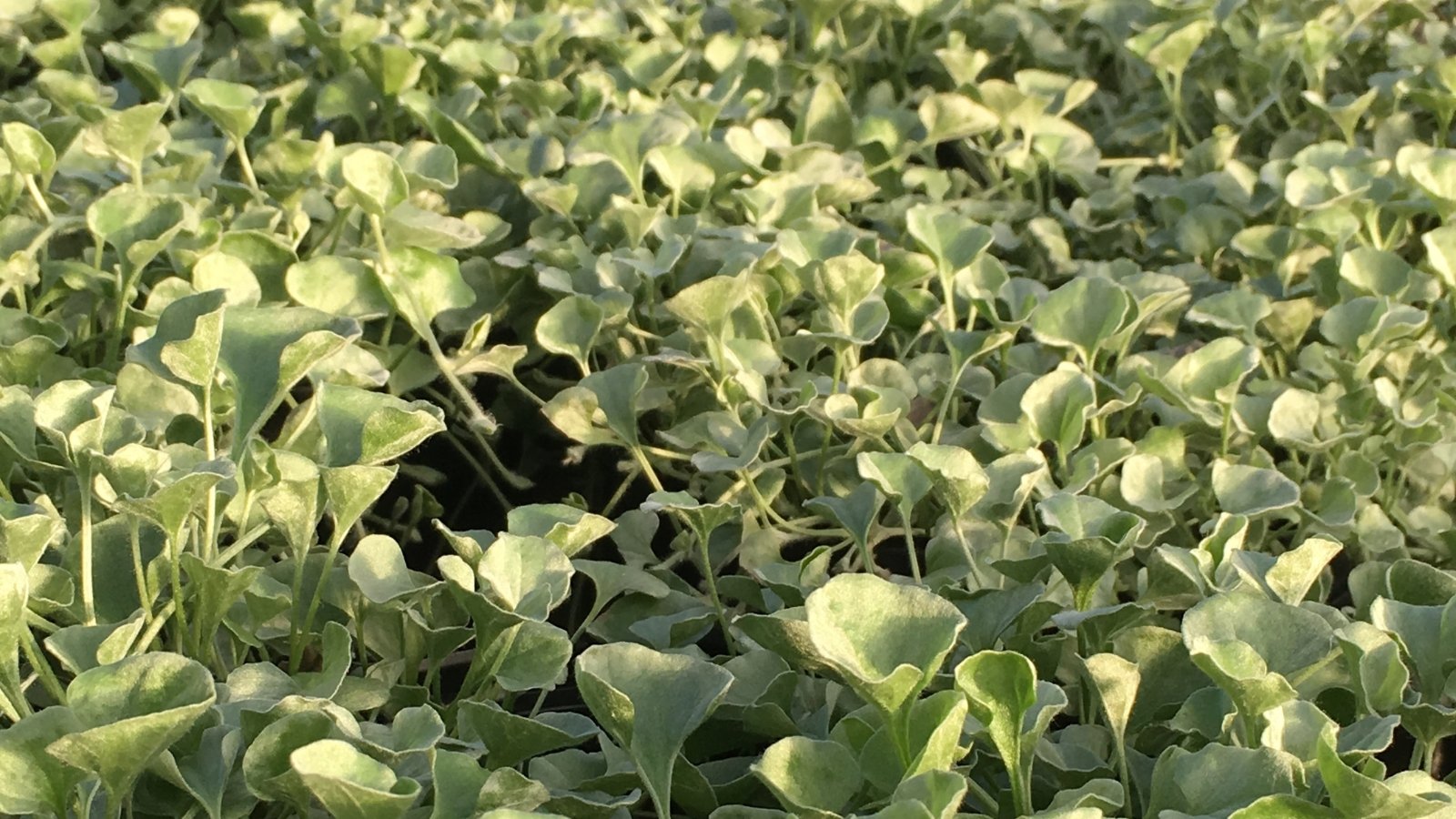
Layering the long, trailing vines is easy. Simply lay a healthy vine along the soil surface. About halfway down the length, dig a small hole and bury the vine after removing the lower leaves. Water it in and label it so you can easily locate it later.
In a month or so, small roots will have started to form along the stem you buried. You can layer multiple stems if the goal is to fill out a container or create more plants.
Division
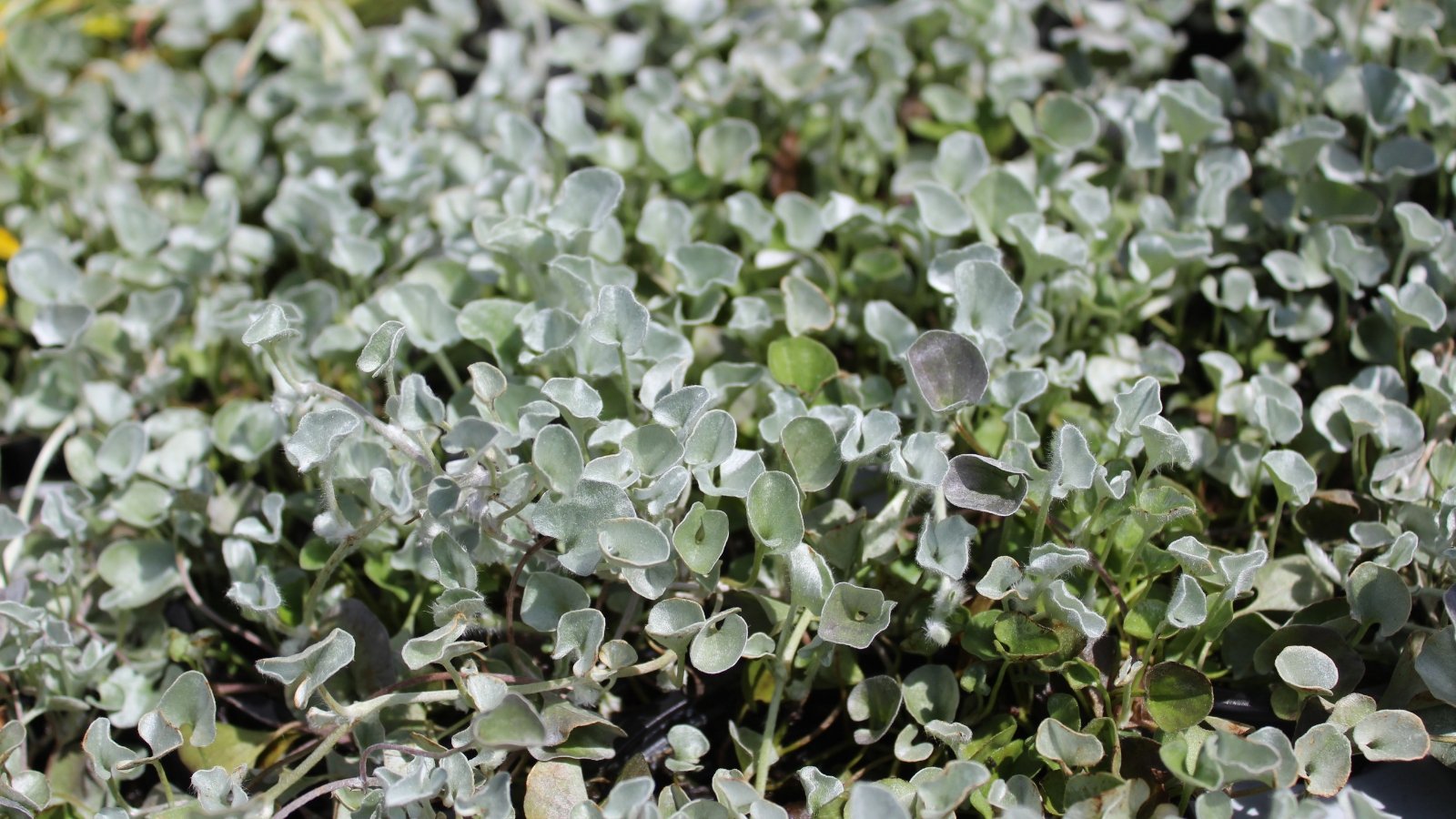
If you’ve layered your plants to create new plants, wait six to eight weeks, then dig them up. Notice the state of the new root system. If they look healthy, snip the new plant off and repot it in fresh potting mix. Keep it out of direct sunlight for a few weeks and don’t allow the soil to dry out. Gift the new plant to a friend or transplant it to a new area.
If you’ve successfully overwintered your dichondra plant, gently split the root system apart in the spring and pot them up following the same method as above.
Collecting and Saving Seeds

When foliage begins to die back in the fall, snip off a few stems and allow them to fully dry. You should notice a few seed pods on each stem. They’re a similar color as the foliage, so they may be hard to spot.
Each seed pod contains one to two medium-brown seeds. Add them to a plastic or paper baggie and label it with the year collected and, of course, ‘Silver Falls.’ Seeds only became readily available to home gardeners until recently.
Common Problems
These plants don’t have many serious pests or diseases, but here are a few issues to watch out for.
Yellowing Leaves

Yellow foliage may be a sign of overwatering. Pull back and allow the soil to dry out a bit before your next watering session. Use the finger test in the future to monitor soil moisture levels. Stick your fingers down into the soil. When you pull them out, there should be moist soil about two inches down. If not, it’s time to water.
Ensure the drainage is good. If your plant is in a pot, consider changing the pot and freshening up the soil.
Pests

If weather conditions are ideal and you keep your garden tidy, pests shouldn’t be too much of a bother. However, here are a couple to look out for:
- Flea beetles: Flea beetles are hard to prevent and harder to catch. The metallic black bugs are quick jumping and hungry, especially in the spring when they’re newly hatching. They leave tiny spots where they’ve sucked the plant’s juices from in their wake. The best treatment is proper crop rotation or covering young plants with insect netting to exclude them or sprinkling them with diatomaceous earth to deter them.
Fun fact: Dichondra argentea was once used as a lawn alternative in the West before flea beetles drove it off.
- Cutworms: Cutworms are known to cut plants off right at the soil surface. Young plants are at the biggest risk. If you’re growing on a small scale, there are a few things you can do to deter them:
- Surround the base of each plant with a paper collar
- Sprinkle cornmeal around the base and leaves
- Sprinkle diatomaceous earth or coffee grounds nearby
- Organic sprays like Bt or spinosad can help control populations
- Till or turn over the soil before planting to expose the pests, leaving them vulnerable to freezing, drying out, or falling prey to birds or other predators. It may also destroy or disturb eggs enough that they won’t hatch.
- Remove garden debris
‘Silver Falls’ is deer-resistant.
Diseases
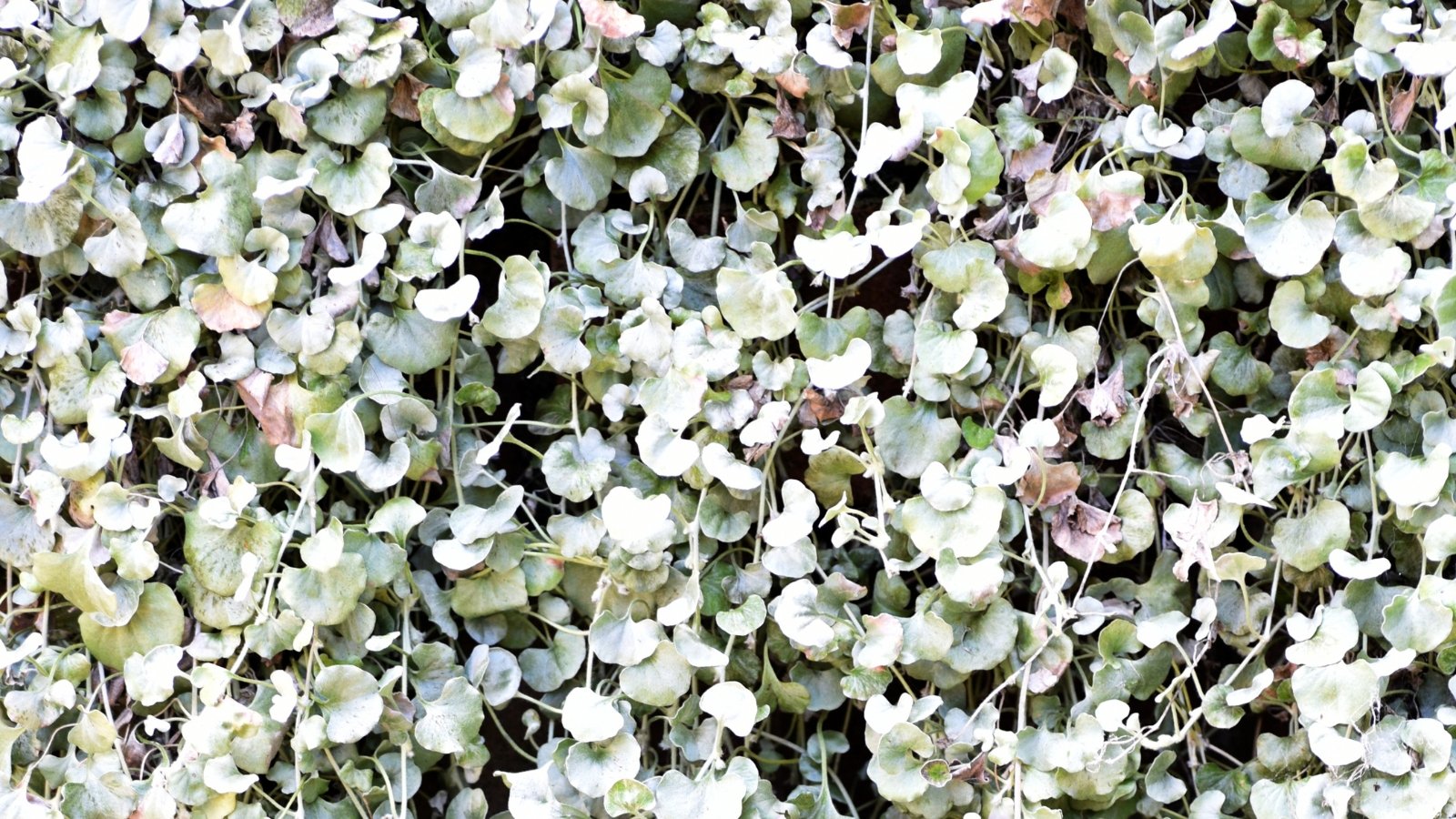
- Alternaria leaf spot: This fungal disease can spread by spores through wind, water, clothing, and gardening tools from other hosts present in your garden. It can also arrive on infected seeds. Symptoms include white, red, or gray lesions on the upper side of leaves, which may eventually coalesce. If the outbreak is severe, the stems may collapse, and the plant could perish.
- Root rot: This is caused by soggy water and roots that can’t breathe. Symptoms include stinky soil, yellow leaves, and wilting. Stop watering right away and allow the soil to dry out. If you’re growing in a pot, repot in fresh, well-draining soil. Plants may or may not survive.
- Rust: Rust is caused by several different fungi in the order Uredinales and requires wet leaves to grow. This makes watering at the plant base, allowing plants to dry out during the day, and providing ample airflow very important. Rust causes yellow, brown, and orange spots on the leaves.
While rust doesn’t typically cause significant damage or death, infected parts can be removed. You can remove infected parts of the plant, leaving at least ⅓ of the plant. If you purchase plants, inspect them thoroughly for signs of rust before bringing them home and planting them in your garden.
Frequently Asked Questions
Can I grow it in containers?
Yes! While ‘Silver Falls’ fills out a garden floor nicely, it also looks and grows great in containers, spilling over the top of hanging baskets and window boxes.
How should I design it in my garden?
The cool blue silver looks awesome against bright annuals in yellow, orange, and blue. In a cottage garden or patio container, pair it with pale pink, purple, and white.
Can I overwinter my plant?
Some growers have had success overwintering ‘Silver Falls’ by bringing it indoors or into a semi-heated garage in zones as low as 5b. Alternatively, you could heavily mulch your plant outdoors after pruning it to the ground. Depending on the level of frost and low temperatures you receive that winter, it may or may not survive. Save seeds and start them indoors in the spring, just in case.
Final Thoughts
‘Silver Falls’ dichondra is incredibly easy to grow, maintain, and propagate. It makes a low-maintenance and beautiful ground cover and performs well in containers.


